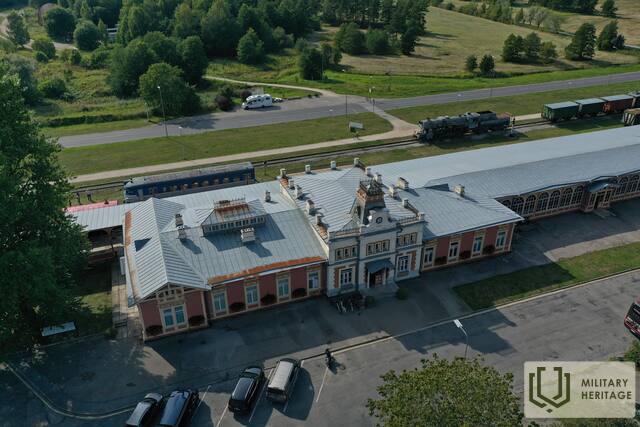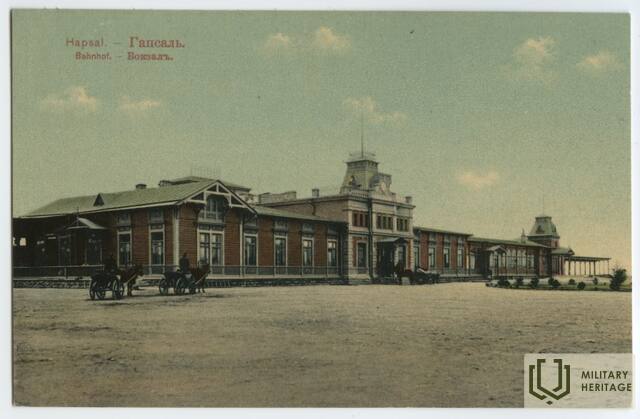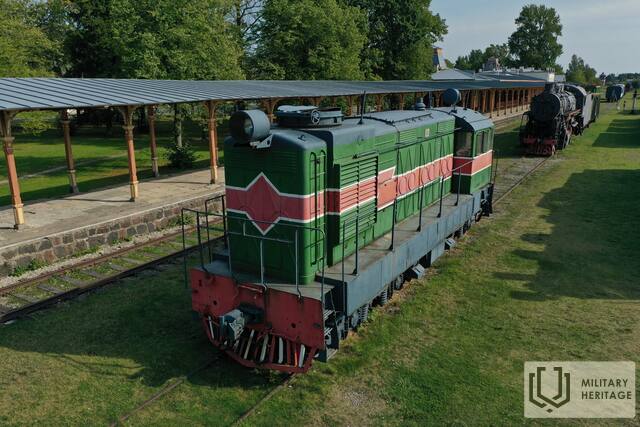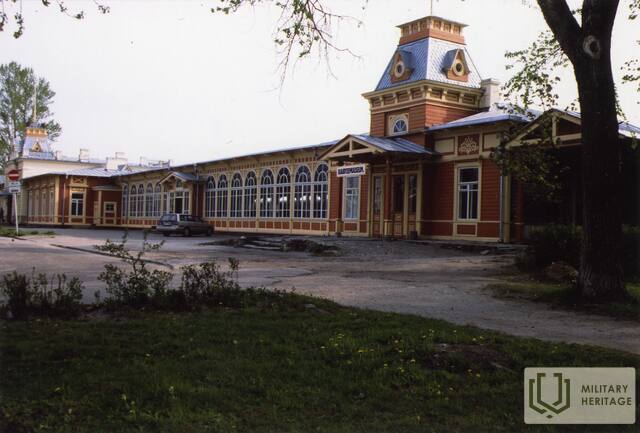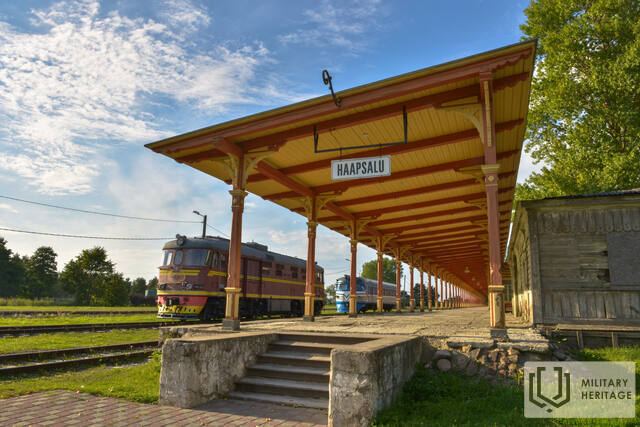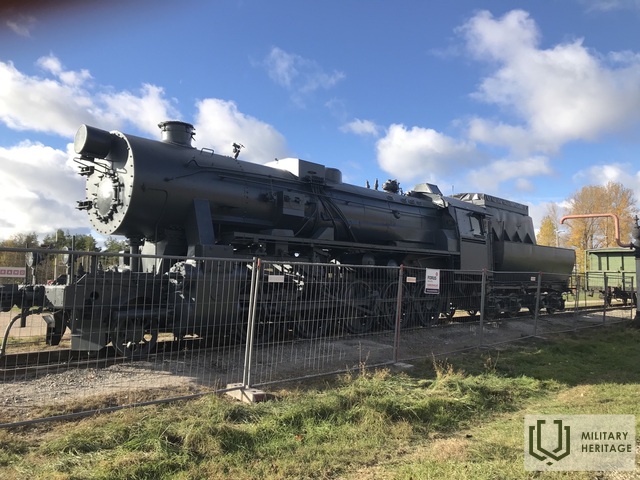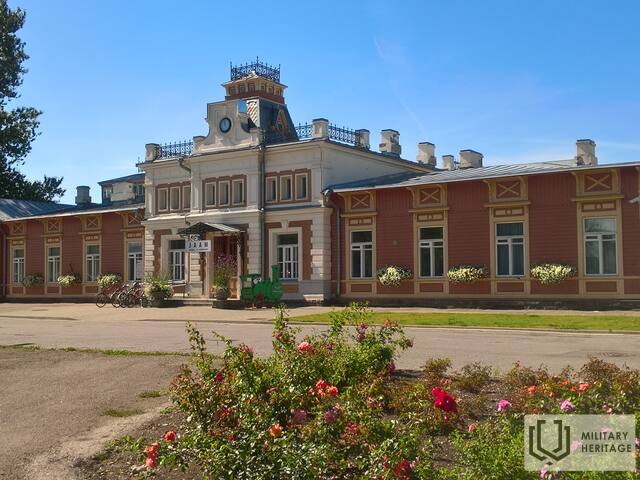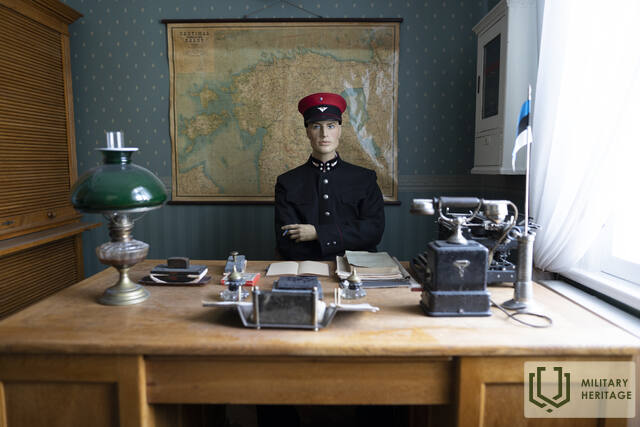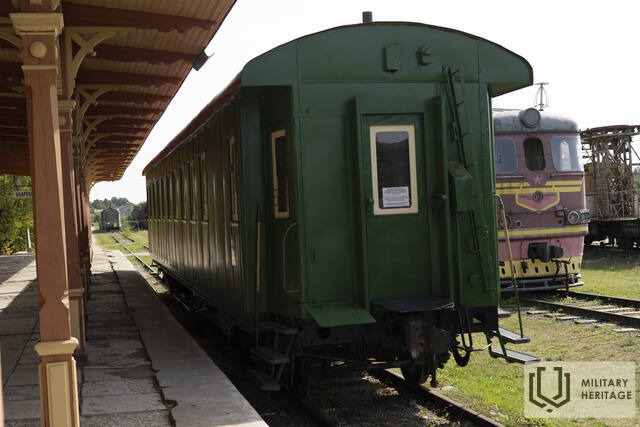Hapsalu geležinkelių ir susisiekimo muziejus
Muziejus

This museum is housed in a train station built in the early 20th century to service the railway line connecting to the resort in Haapsalu.
Opened in 1997, the museum showcases the one-and-a-half centuries of development of Estonian railways and mediums of communication. Besides decommissioned locomotives, the museum displays an affable station master and an Ericsson Skeleton Type telephone and invites visitors to the station's post office.
The outdoor exhibition also displays a World War II steam locomotive 52 3368.
The steam locomotive 52 3368, initially numbered 16494, was completed in April 1943 in Munich at the Krauss-Maffei Works and then transported to Austria, the Bruck an der Mur depot of the Villach division. The Hungarian State Railways (MAV) rented the locomotive and on June 7, 1945, it was captured by the Red Army. When the Hungarian-Romanian border was altered, locomotive 52 3368 was given to the Romanian railway (CFR). In August 1950, at the CFR Iași Works the locomotive was converted to broad gauge (5 ft) and given to the Soviet Union, where it operated at the Kotovsk and Vapnyarka depot of the Odessa Railway from October 1950 to 1956. After that, the Ministry of Transportation of the USSR kept it in the strategic reserve. On August 26, 1957, the locomotive TE-3368 (ТЭ-3368, the class 52 was renamed as TE in 1952) arrived at the Valga locomotive base. There the loco got another tender (so-called Wannentender), built in 1943 by Borsig Works in Berlin and formerly belonging to locomotive TE-450. It could carry 32 m3 of water and 10 tonnes of fuel. The locomotive stayed in Valga (from 1961 to 1968 shortly in Tartu) until the base was closed in 1997. From 1950 to 1985, its kilometrage as a broad-gauge locomotive was 463,216 kms. On May 8, 1998, the steam locomotive was delivered to Haapsalu to be exhibited at the Railway Museum.
The class 52 war locomotive was designed in a hurry in June 1942 on request of the Reich´s Ministry of Armaments and War Production in the example of the class 50 locomotive. The 2-10-0 type engine had a power of about 1,500 hp and a maximum speed of 80 km/h. It had a simplified and light design (15-ton axle load) with an intended life-span of 5 years. From 1942 to 1945, a total of 6,295 locomotives of that class were built in 14 factories across Europe. After World War II, the class 52 locomotives had spread all over Europe, from Norway to Turkey and from Belgium to the Soviet Union. There were over 2,000 locomotives in the USSR – the exact number remains unknown, as the locomotives were subject to different authorities, including security authorities. In Estonia, the class 52 steam locomotives ran first on standard-gauge (1,435 mm) lines in 1943–44. Since 1953, when they replaced the American class ShA war locomotives (the Shariks) in Estonian freight traffic, 138 class TE (52) regauged locos have been here. By 1991, only one remained in Estonia – the TE-3368.




